Advanced Techniques
|
If I have seen farther than others, it is because I was standing on the shoulders of giants. Isaac Newton.
It could be argued that a straight punch is an advanced technique in Judo, ikkyo is an advanced technique in Karate, and a front kick is an advanced technique in Aikido. What commonly might be advanced in one art is basic in another. Rather than any technique being advanced, it is usually the case that less emphasis is placed on it. Simply, if you do it a lot, it will be easy. Accordingly, there are no advanced techniques, only one's own narrow experience. I define advanced as being able to learn something new either quickly, or preferably, instantly. It is quite true that, "the chains of habit are too weak to be felt but too strong to be broken." Anon. We have to be able to break free of habit in order to progress. Habit is the biggest obstacle, be it a good or bad habit. (a) Secret techniques No matter how much the teacher tries to reveal, if the student is not ready to receive, the 'secret' remains invisible. An open but often unmentioned secret is the addition of atemi to Aikido techniques. For example, in the midst of shomen-uchi and yokomen-uchi ikkyo it is possible to add two powerful atemi without interfering with the flow of movement. A low kick or trip could also be incorporated. Perhaps most revealing, is that all the so called secrets are not secret at all. Rather, they just remain hidden in plain sight. |
|
Shomen-uchi ikkyo - an effective practical
method
|
|
| 1 Tori cuts ukeís shomen-uchi lightly or strongly | 2 Tori strikes the floating ribs |
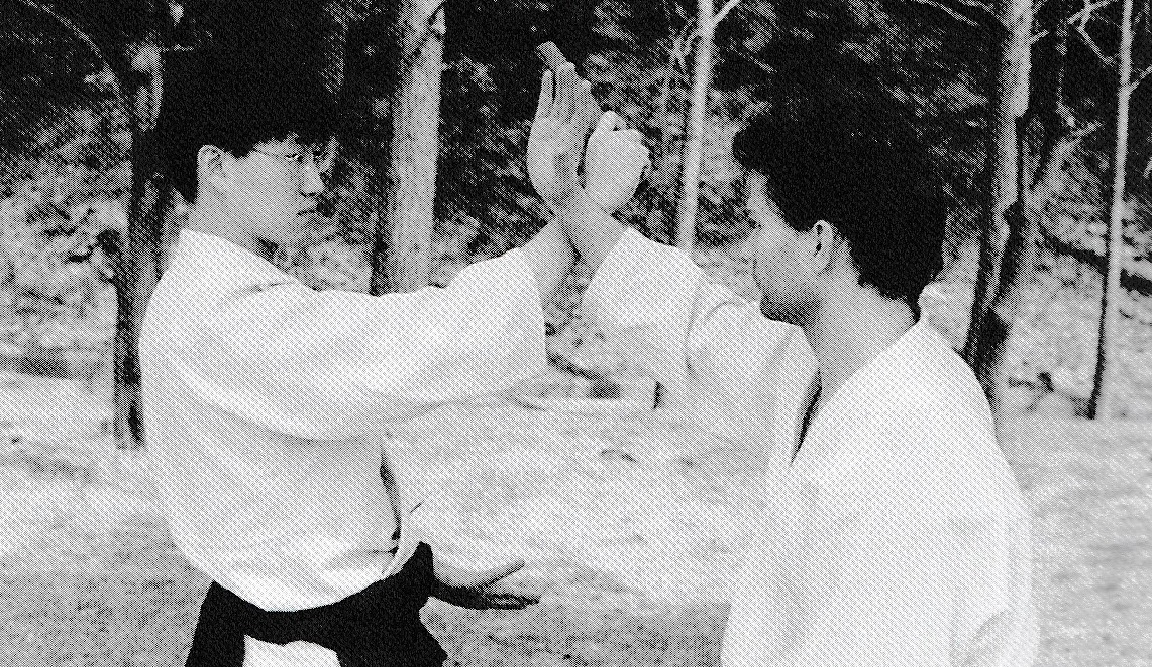 |
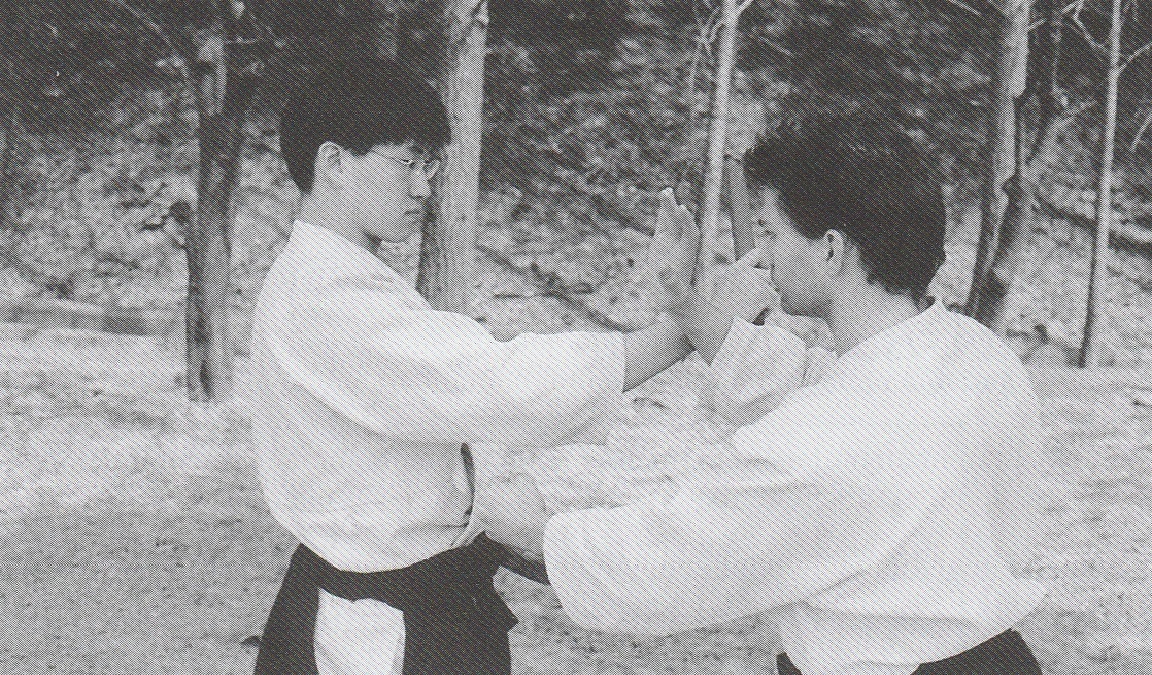 |
| 3 Tori strikes the face | 4 Tori moves into standard ikkyo |
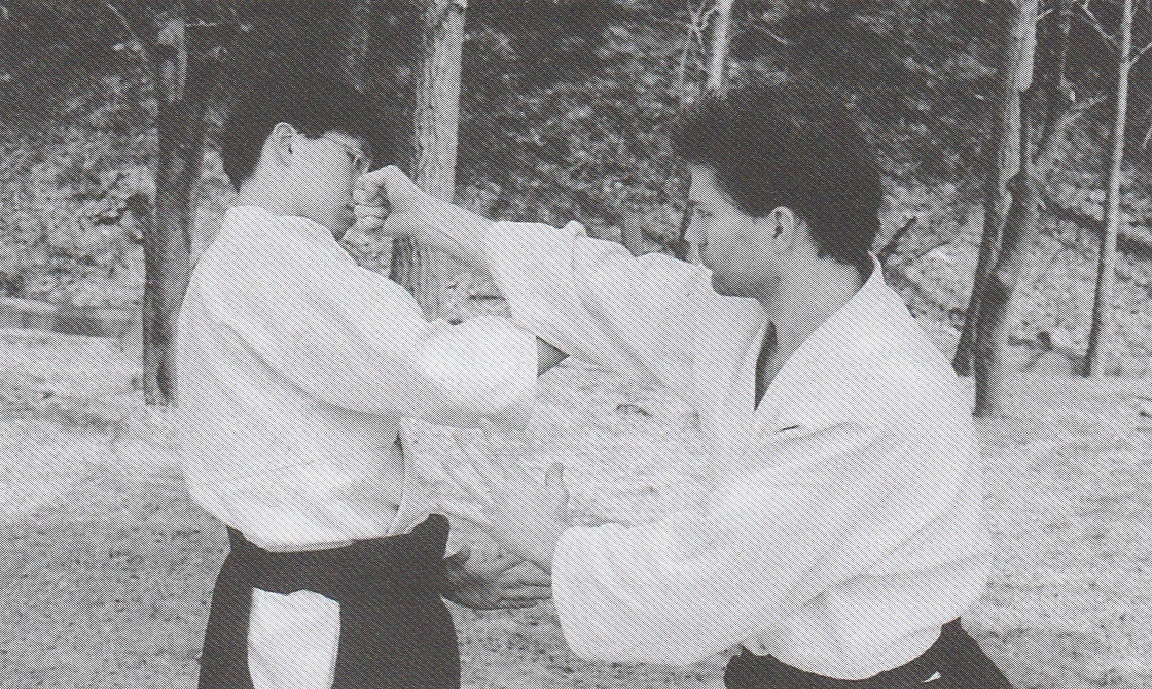 |
 |
| Against a yokomen-uchi knife attack
|
|
| 1 Tori hits ukeís yokomen-uchi lightly or strongly | 2 Tori parries with a hitting feeling |
 |
 |
| 3 Tori strikes the floating ribs | 4 Tori strikes the face |
 |
 |
| 5 Tori moves into standard ikkyo | |
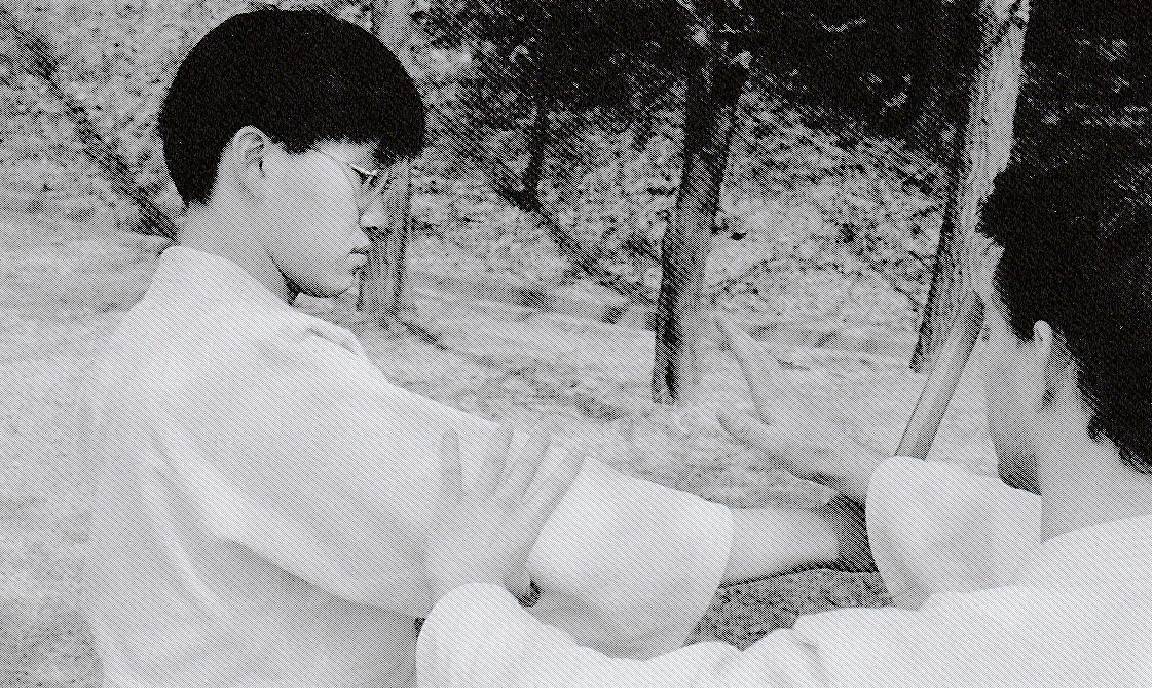 |
|
|
(b) The twenty-year technique People jokingly refer to ikkyo as being the twenty-year technique. In some senses it is true since, over time, the way one approaches it changes; it becomes more personalised with experience yet never solidifies in form. Rather, the secret of ikkyo is in escaping the form, therefore those that stick to the absolute form will never learn it even after fifty years. The perfection of the form blinds them. This is not only true of ikkyo, but of Aikido in general. If one fails to graduate from the shu of shu-ha-ri, one will never escape the basic form. This contrasts starkly with O Sensei since his post war Aikido life was spent enjoying the ri of shu-ha-ri. To escape one needs to think for oneself. Of course, the main reason it takes so long is because there is no one there to guide. O Senseiís path was personal and is impossible to follow. The modern kata based syllabi of various schools appear to lack logical progression to freedom - so it is left for the self to discover. Some do, many do not. But there is no need to wait twenty years to try. |
|
(b)
Henka-waza Depending on the school, the idea of modifying technique ranges from being totally unacceptable to being absolutely essential. Some schools keep their students to a strict syllabus, others teach what they label as henka-waza in addition to standard techniques. Few schools encourage their students to experiment by themselves, which if you think about it, almost sums up the totality of more practical arts such as Judo. Following principles found within the various techniques, it is not too difficult for the average student to come up with new blends on more traditional shapes.
|
|
| Ikkyo, elbow hand palm up | Ikkyo, elbow hand with reverse grip from behind |
 |
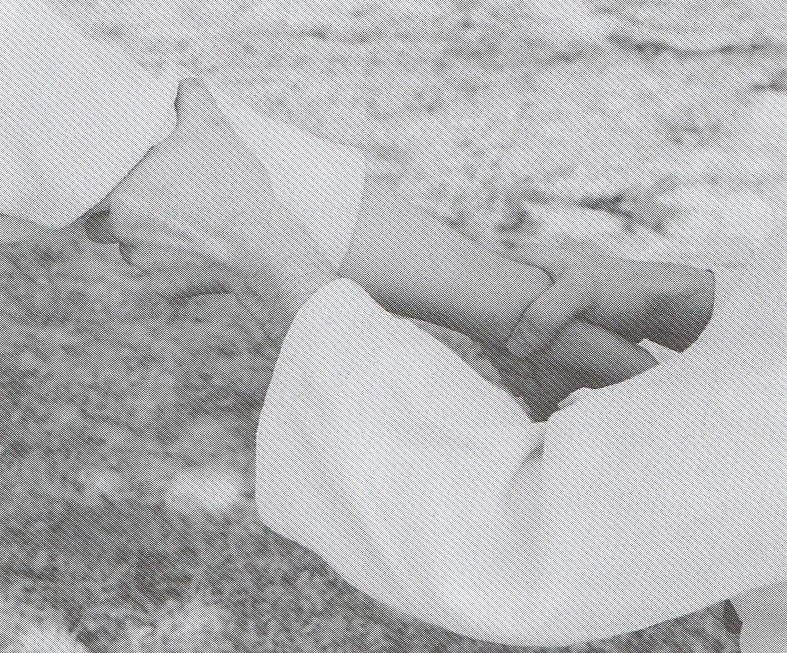 |
| Ikkyo, elbow hand with reverse grip from side | Nikyo variation |
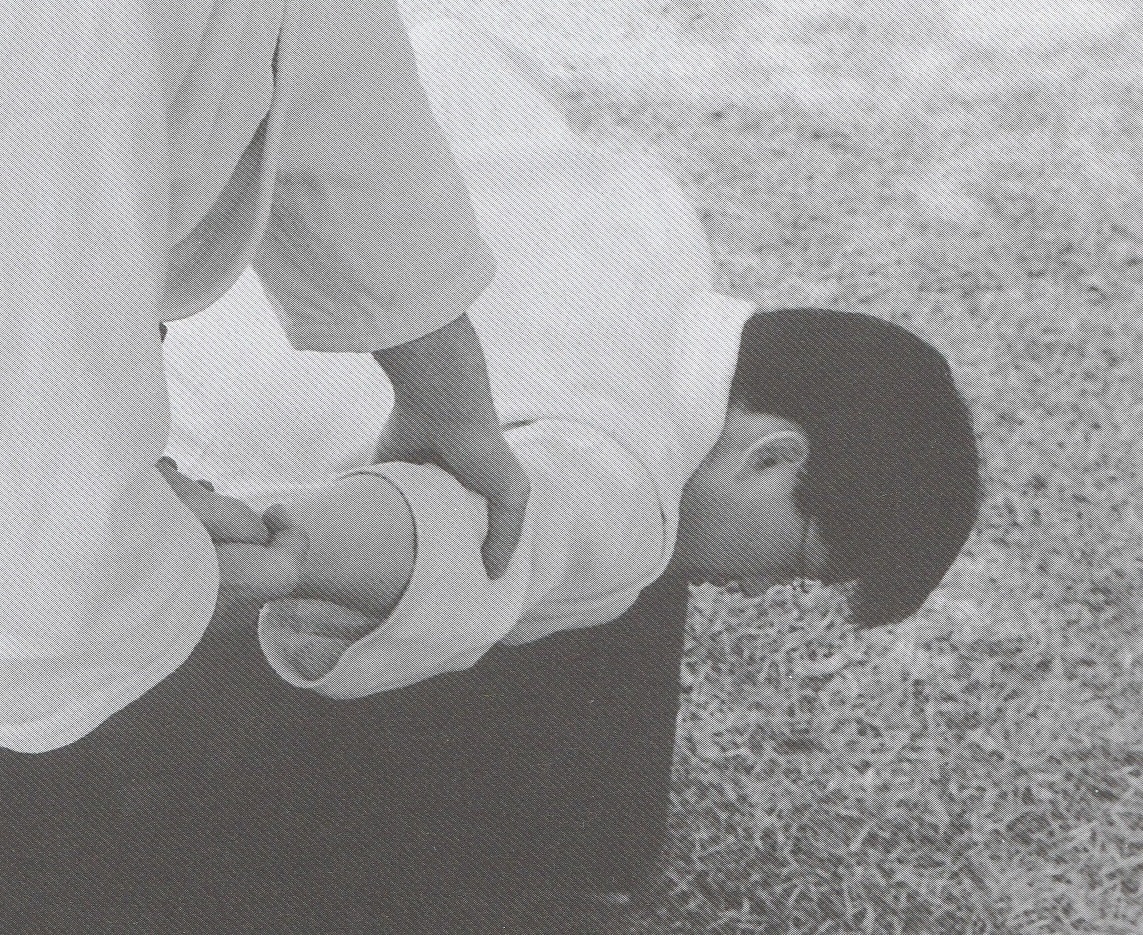 |
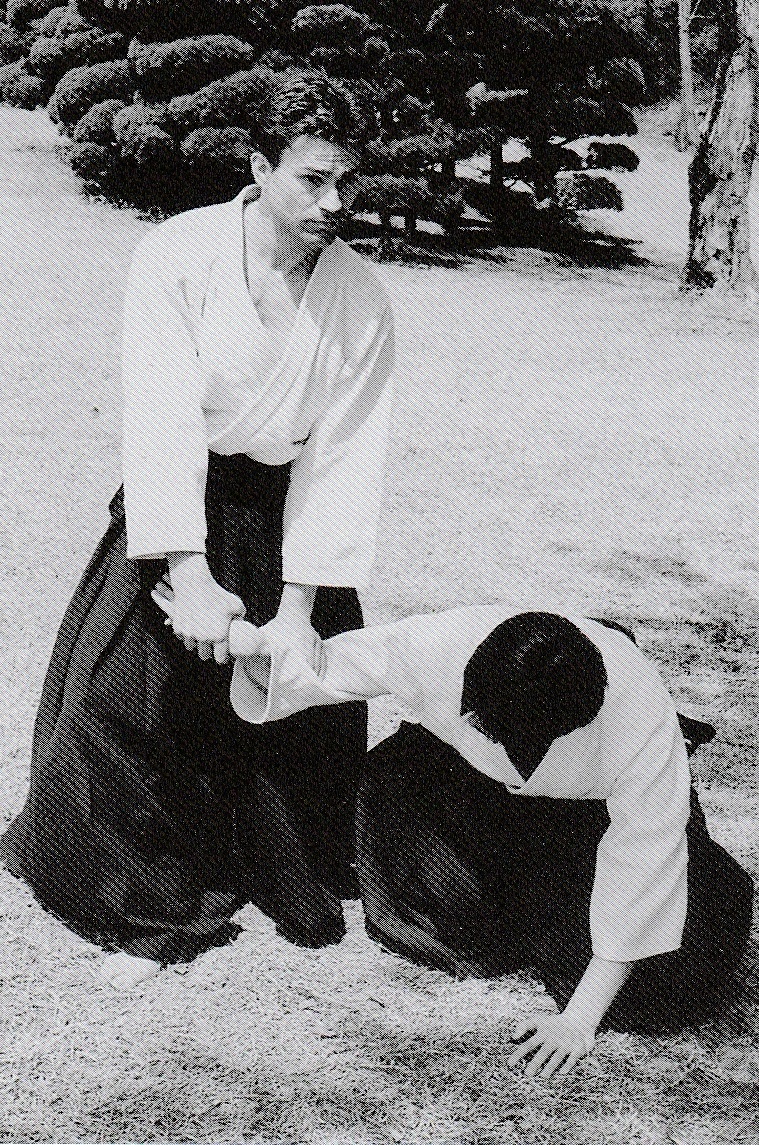 |
| Irimi-nage variation | Koshi-nage variation |
 |
 |
|
(d) Renraku-waza The basic techniques that O Sensei has left for us are quite interesting. Unlike other arts there are not nearly so many techniques, but there do seem to be enough to twist an arm or throw a body in a multitude of ways. In Aikido, in general a great deal of emphasis is made on getting the technique right. Not much thought is given to combinations, or mixing different techniques together. At least that is, according to the syllabus. What happens is that once one has enough experience it starts to happen naturally. For example, if one throws uke down with kote-gaeshi, without turning them over, one can let them get up a little, move around to their rear, and begin irimi-nage. It just fits perfectly. Once the basics are mastered, combinations pour out, yet are rarely taught. Clearly, O Sensei's choice of basic techniques is remarkable in the sense that with a little thought, they all link together naturally.
(e) Kaeshi-waza What is interesting is that the same principles used to make technique can also be used to counter, to make kaeshi-waza, reversing the technique upon uke. Not quite as easy as combinations, and rarely practised, they first appear as new techniques to be learned. However, since they work according to the same aiki principles it does not take long for the initiated to realise that a little 'unbendable arm' when receiving technique goes along way towards making an effective counter. One should not overly resist or struggle when performing counters. Uke should give tori something to work with, and tori should find a way to use it without resorting to strained effort. One example I particularly like is to let uke do nikyo. What I am after is uke's downward motion at the point of application, just at the point of pain. I give my (right) wrist almost completely to uke. As uke applies the pain I lower my body and arm together matching uke's movement exactly, but leading uke's energy with my wrist I overtake uke's movement, and then as I stand back up, I instantly have a kote-gaeshi grip on uke using my left hand, working through their thumb using my right forearm. The trick is not to resist at all, but blend with, add to, and overtake uke's movement. Of course, if uke knows what tori is going to do in advance, the nikyo might be applied much more sharply. In that case, I may not give my wrist quite so completely. Once an interest in kaeshi-waza is aroused, one should begin to collect enough to deal with the various Aikido techniques. Personally, I like to have three or four counters for each technique - more for curiosity than reality: For example -what if I move left, or right; or what if I start early, mid-time, or late? Later on, once you have mastered ukemi, you will be able to recognise tori's movement (waza) and flow with it to such a degree that you can subtlety overtake them and take control. Later, I believe, as long as you have it in your mind to train this way, you will be able to do this earlier and earlier so that tori barely has the chance to create is technique and then you have it = aiki. |
(f) Pressure points
 |
Every beginner expects at some point they are going to learn the secret pressure points of Aikido. Well the problem here is that, truth be told, they remain secret because no one knows them. They do not exist in any regular Aikido syllabus, but exist they do. So if shown one, make sure to remember it - begin your collection. The easiest way to learn them is to train at a school that uses them regularly, such as Jujutsu. With a little ingenuity one will be able to apply them in one's Aikido techniques, the key being to make them fit into the technique - not trying to make the technique fit the pressure point. An added benefit is that one will know where one's own weak points are and be on better guard.
|
| Thumb in eye | |
 |
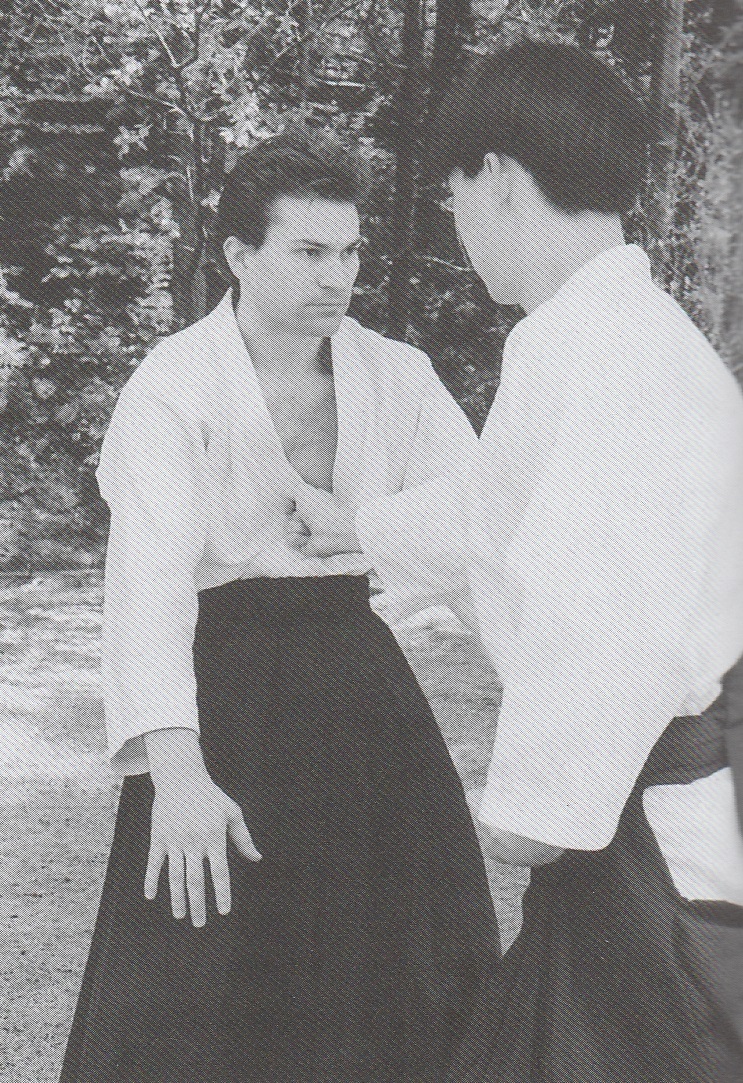 |
| Fingers around trachea |
Punch to solar plexus |
|
(g) Strangles and chokes
Strangling stops the flow of blood to the brain, choking refers to closing the windpipe thus preventing breathing. Both can be done with the bare hands, arms, or by grabbing the collar(s) of the keikogi. Variations can be done from the front, side, or rear. Although not normally done in Aikido, some teachers do show them from time to time so one ought to keep a note and record the various methods; one cannot be a passive learner for material that is not on the syllabus. Otherwise, the only option is to go to Judo or Jujutsu classes to learn their shime-waza. Practising Aikido techniques against simple strangles and chokes offers a more sensible self-defence perspective.
|
(h) Non-Aikido techniques
|
|
 |
| Osoto-gari. | Kosoto-gari. |
 |
 |
| Ouchi-gari | Kouchi-gari |
 |
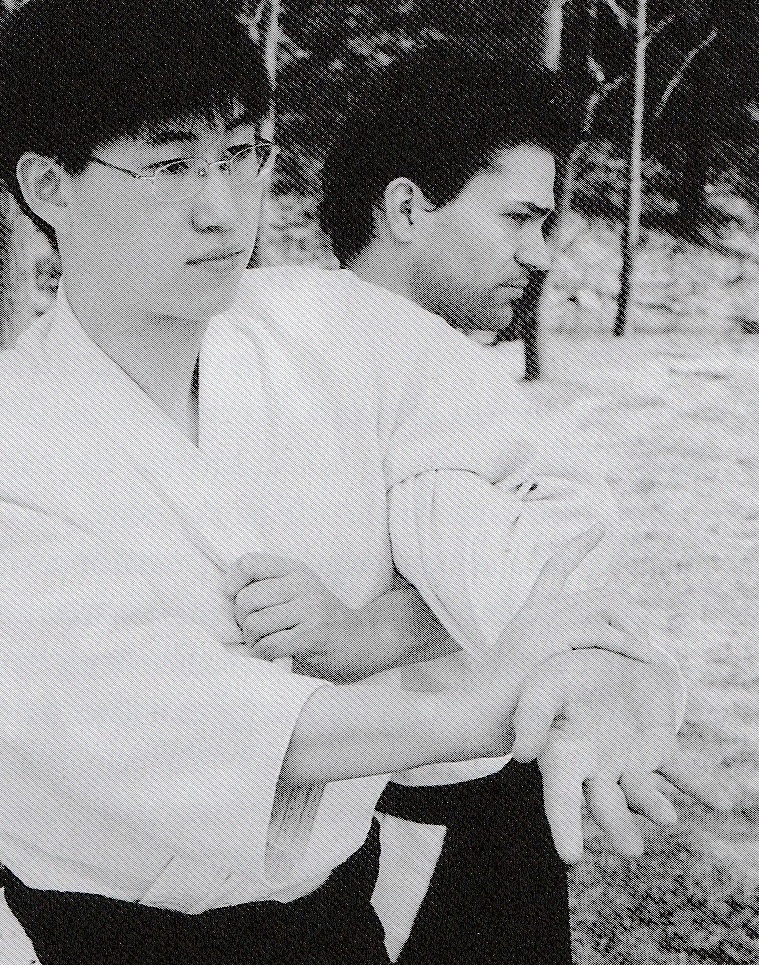 |
| Kata-seoi-otoshi |
Ude-gatame |
|
Personally, I believe that many of the techniques in other arts can be done according to aiki principles and therefore, there may be few, non-Aikido techniques. Such techniques might appear advanced to the uninitiated, but are often quickly picked-up by the co-ordinated Aikidoka. Indeed, if aiki can be added to a technique, then it can be called Aikido. A trip or sweep practised with solid aiki contact and harmony can be called good aiki even though the form might look like Judo. Aiki is sometimes apparent in other arts even though it is not taught as a principle. I have seen a few Karate and Judo teachers whom I would say had great aiki within. Their aiki developed naturally through hard training - but they can not pass it on to their students since they do not know they have it - they cannot even give it a name. Anyway, the crux is that any technique can be an aiki technique if it follows aiki principles; it is not limited to Aikido form.
(i) All practice is kaeshi-waza (counters) if the attack is dynamic and real.
(j) As for how much is enough energy in your arms - make every technique in a way that allows for change.
(k) Randori In Shodokan Aikido (Tomiki) there is competition that by necessity has rules. For example, one of the rules stipulates no tripping. It makes sense to be interested in what one is not allowed to do. For example, there are many occasions where a trip is an excellent choice of technique. Such 'shapes' appear constantly in the bustle of randori. A little advice: Keep the rules for competition, not for training. Whatever the style of Aikido, if it claims to be a martial art then there is no way it can justify not being able to use the occasional Judo throw or Karate strike, especially if applied using aiki principles.
|


 Front
collar strangle.
Front
collar strangle.